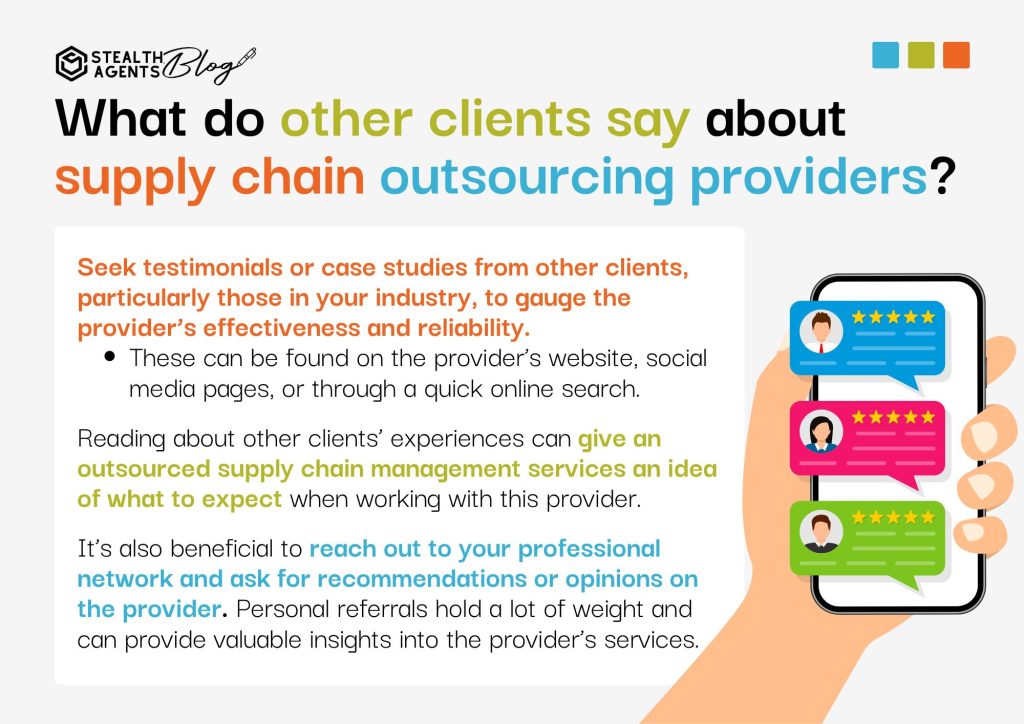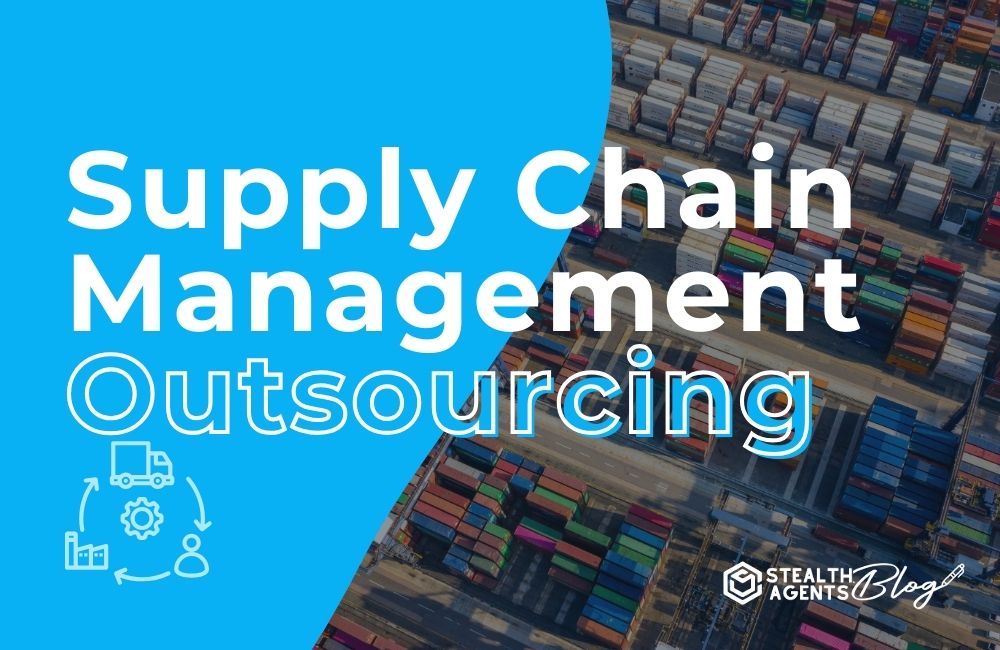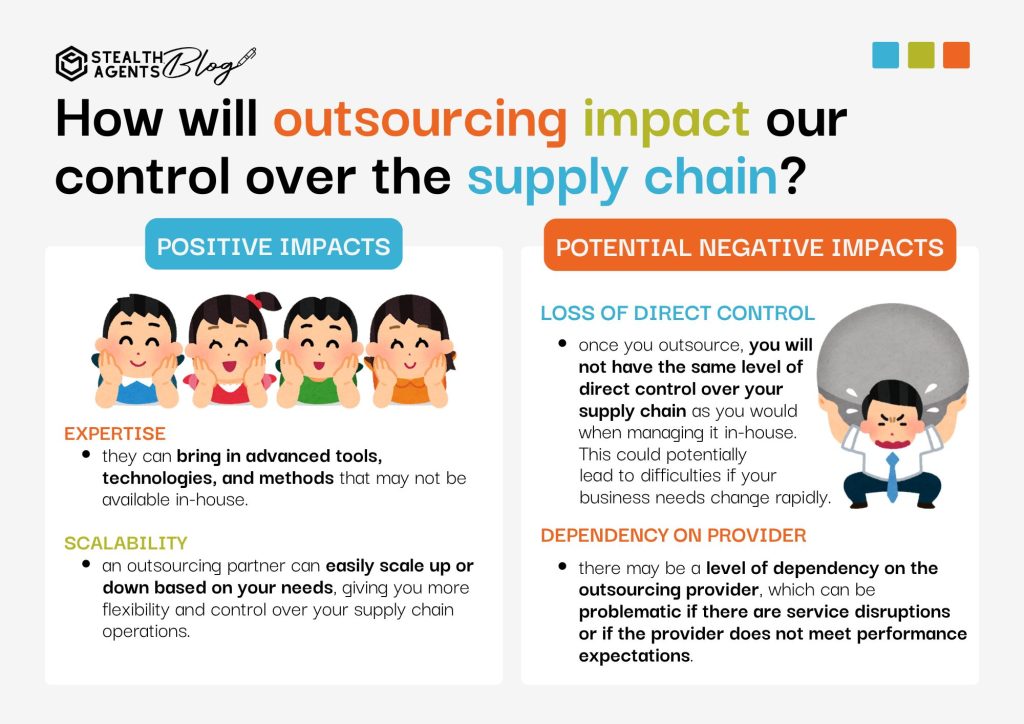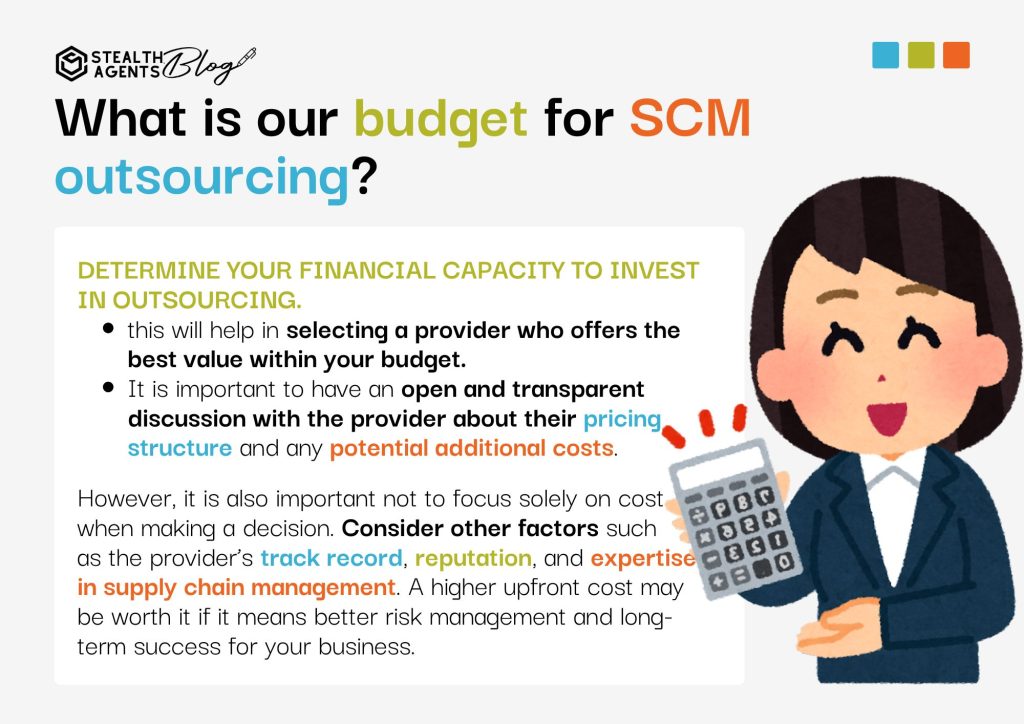Outsourcing SCM can be a strategic move for businesses looking to enhance efficiency, reduce costs, and improve service delivery.
In today’s globalized and highly competitive business environment, companies are constantly seeking ways to optimize their supply chain performance.
One way to achieve this is by outsourcing certain aspects of the supply chain management process.
Focus on your priorities. Outsource to Stealth Agents and schedule now at competitive rates.
Hire a virtual assistant now!
What is Supply Chain Management Outsourcing?
Supply Chain Management Outsourcing involves delegating your company’s supply chain operations to a third-party specialist.
This can include logistics, procurement, inventory management, and distribution functions.
The goal is to leverage the expertise and capabilities of external providers to streamline operations and focus on core business activities.
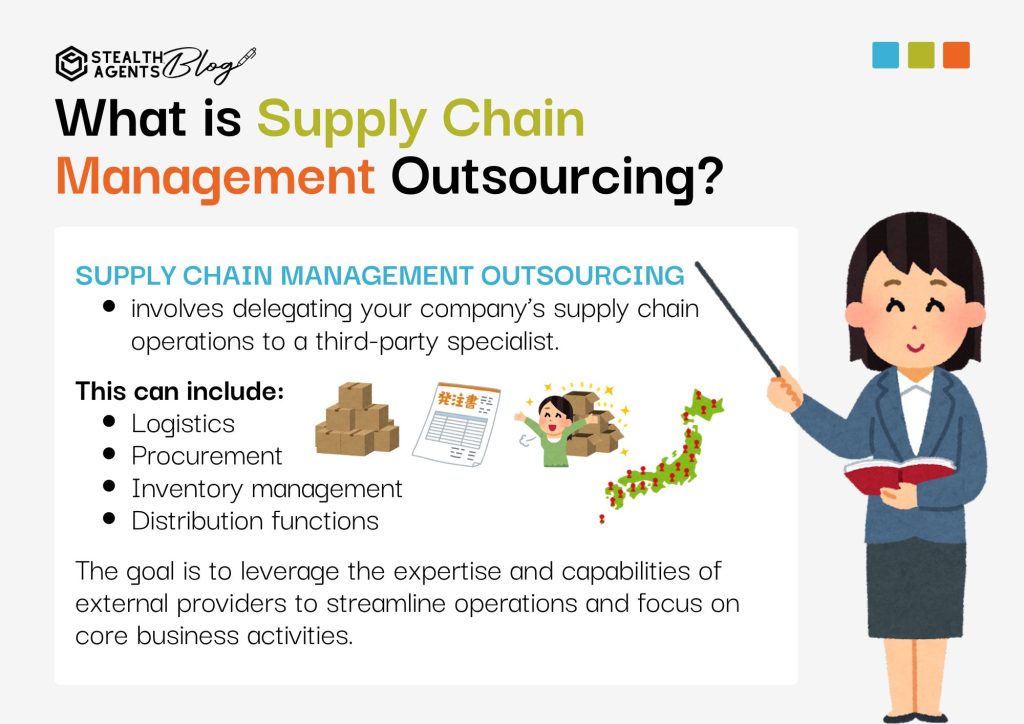
What are the benefits of SCM Outsourcing?
Here are the outsourcing supply chain services benefits.
1. Cost Reduction:
Outsourcing can significantly cut costs by reducing the need for internal infrastructure and personnel.
By partnering with a third-party SCM provider, companies can avoid the expenses associated with maintaining and upgrading software, hardware, and human resources.
This allows them to focus on their core competencies while still receiving high-quality SCM services at a lower cost.
2. Access to Expertise:
Third-party providers specialize in supply chain operations and often bring advanced technologies and methodologies from which your business can benefit.
With the constant evolution of supply chain practices, outsourcing SCM can provide access to a team of experts who are up-to-date on the latest trends and best practices in the industry.
This can lead to improved efficiencies and cost savings for your business.
3. Enhanced Flexibility and Scalability:
Outsourcing allows businesses to easily adjust their supply chain capacity to match demand fluctuations without the logistical challenges of managing resources internally.
This can be particularly beneficial for seasonal businesses or those experiencing growth, as they can quickly scale up or down without investing in additional resources.
Additionally, outsourcing offers flexibility in terms of service offerings, allowing companies to customize their SCM solutions to meet their specific needs.
4. Improved Focus on Core Business:
With the logistical aspects handled by experts, your team can concentrate more on innovation and growing the core aspects of your business.
By outsourcing SCM, you eliminate the burden of day-to-day supply chain management and can instead focus on strategic decision-making and business growth initiatives.
This can lead to improved efficiency and productivity, ultimately resulting in increased profitability.
5. Risk Management:
Professional SCM providers are better equipped to manage and mitigate risks associated with supply chain disruptions.
They have the expertise and resources to create contingency plans, monitor and analyze potential risks, and implement effective solutions.
By outsourcing SCM, companies can minimize risk exposure and maintain continuity in their operations.
Where to better outsource your Supply Chain Management?
Stealth Agents is ideal for outsourcing your Supply Chain Management (SCM). Renowned for their efficiency and expertise, Stealth Agents specialize in streamlining supply chain processes through innovative solutions and advanced technology.
Their team possesses deep skills in logistics, inventory management, and distribution, ensuring that your supply chain operations are both cost-effective and reliable.
With a strong focus on flexibility and scalability, Stealth Agents can adapt their services to meet the specific needs of your business, whether you’re a small startup or a large enterprise. Their commitment to transparency and communication guarantees you maintain oversight and control over your supply chain, even while outsourcing.
Choose Stealth Agents for an SCM partner who enhances operational efficiency and drives your business growth.
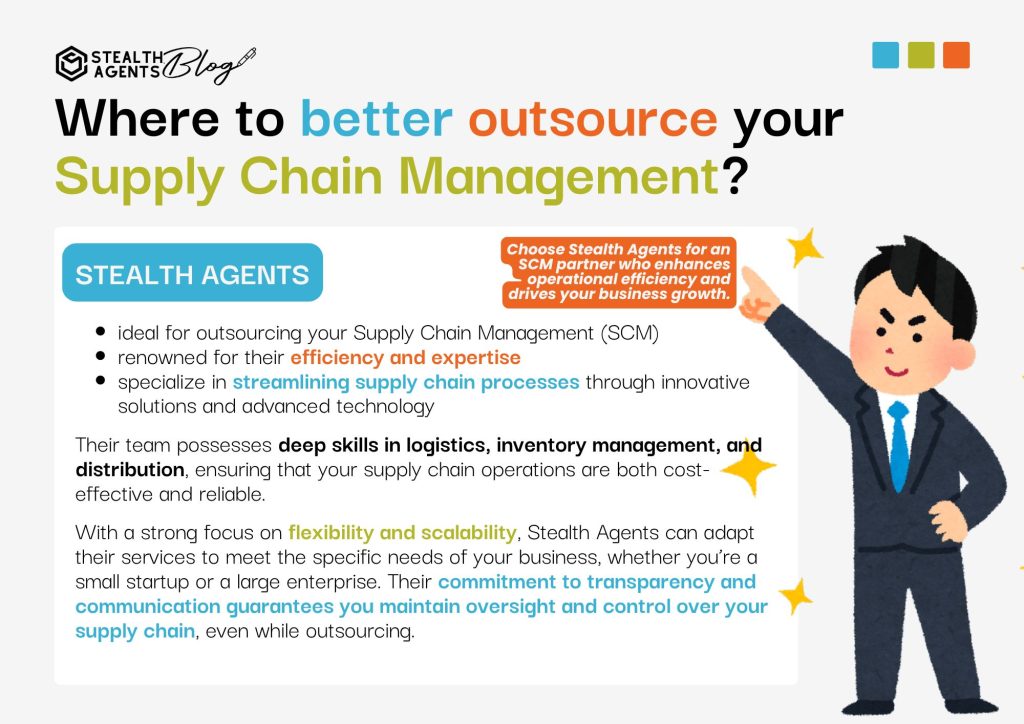
How will outsourcing impact our control over the supply chain?
Outsourcing can indeed impact your control over the supply chain, but this impact can be both positive and negative, largely depending on your outsourcing partner:
Positive Impacts:
Expertise: Outsourcing to a provider with specialized knowledge in supply chain management can enhance your control over the process. They can bring in advanced tools, technologies, and methods that may not be available in-house.
Scalability: An outsourcing partner can easily scale up or down based on your needs, giving you more flexibility and control over your supply chain operations.
Potential Negative Impacts:
Loss of Direct Control: Once you outsource, you will not have the same level of direct control over your supply chain as you would when managing it in-house. This could potentially lead to difficulties if your business needs change rapidly.
Dependency on Provider: There may be a level of dependency on the outsourcing provider, which can be problematic if there are service disruptions or if the provider does not meet performance expectations.
How does the provider handle supply chain disruptions?
Evaluate the provider’s ability to manage risks and disruptions. Ask about their contingency plans and past experiences in handling crises. It is important to ensure that the provider you choose has a solid plan in place for dealing with any potential supply chain disruptions.
It is also beneficial to discuss the provider’s approach to risk management. Do they have measures in place to mitigate risks and prevent disruptions? How do they prioritize and manage their suppliers? These are all important questions to consider when evaluating a provider’s ability to handle supply chain disruptions.
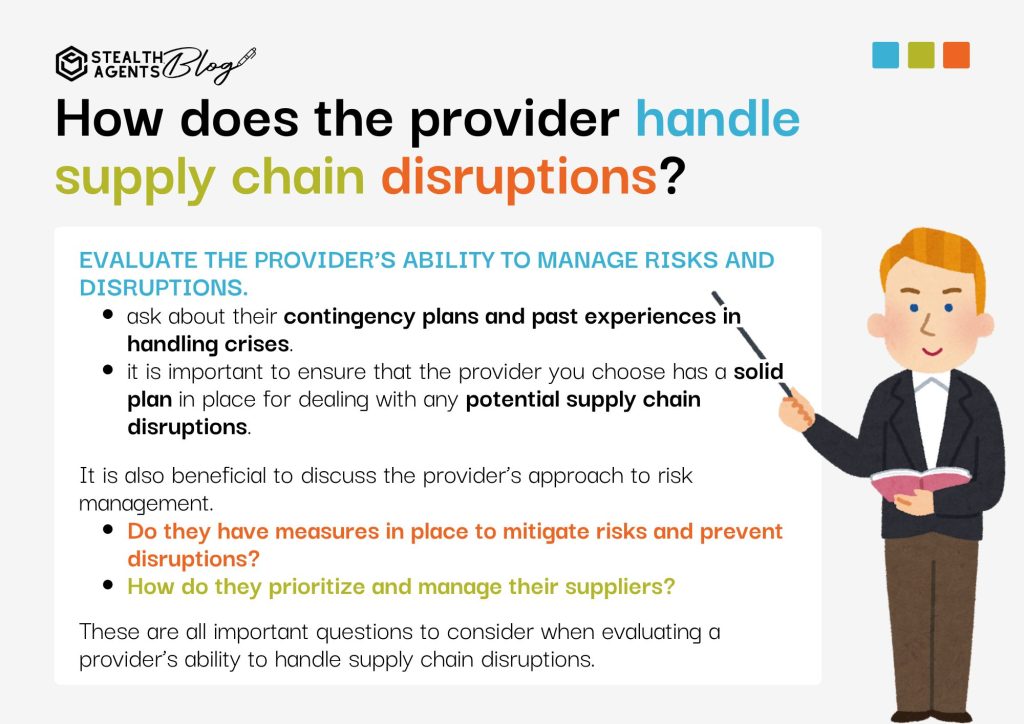
What is our budget for SCM outsourcing?
Determine your financial capacity to invest in outsourcing. This will help in selecting a provider who offers the best value within your budget. It is important to have an open and transparent discussion with the provider about their pricing structure and any potential additional costs.
However, it is also important not to focus solely on cost when making a decision. Consider other factors such as the provider’s track record, reputation, and expertise in supply chain management. A higher upfront cost may be worth it if it means better risk management and long-term success for your business.
What do other clients say about supply chain outsourcing providers?
Seek testimonials or case studies from other clients, particularly those in your industry, to gauge the provider’s effectiveness and reliability. These can be found on the provider’s website, social media pages, or through a quick online search.
Reading about other clients’ experiences can give an outsourced supply chain management services an idea of what to expect when working with this provider.
It’s also beneficial to reach out to your professional network and ask for recommendations or opinions on the provider. Personal referrals hold a lot of weight and can provide valuable insights into the provider’s services.
